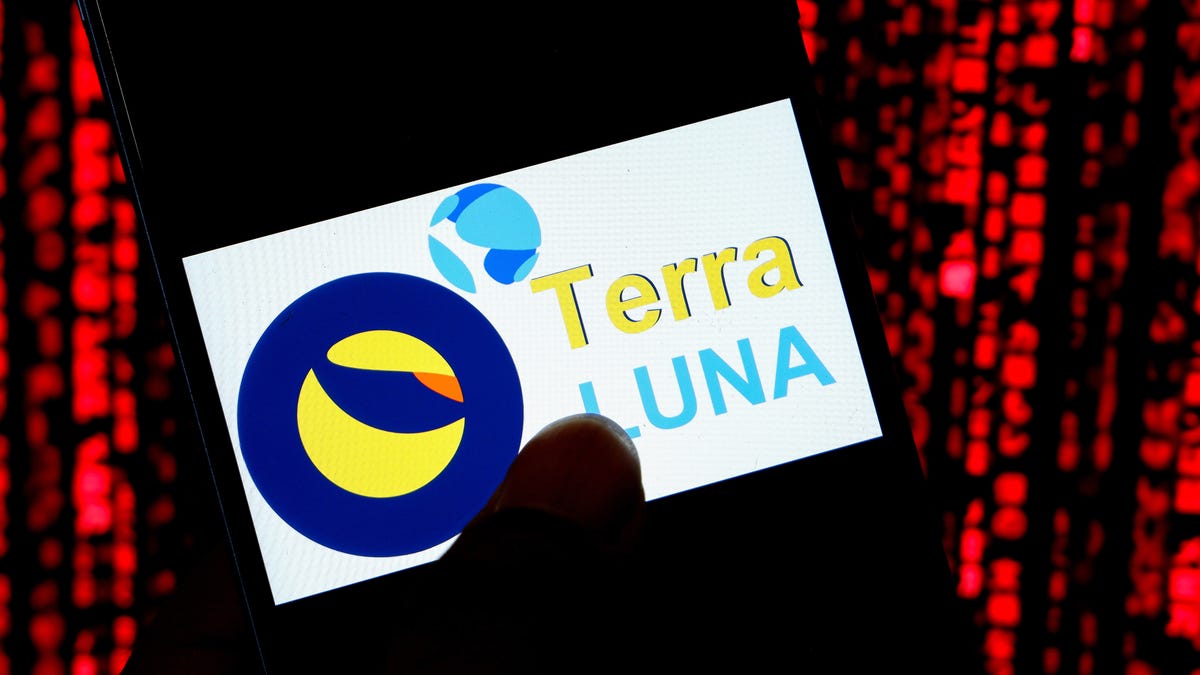Terra to Create New Blockchain After Historic Luna Crypto Collapse
A proposal to fork Terra's blockchain to undo the collapse of luna wins approval.

Terra is a blockchain that natively emits luna tokens. These were used to maintain terraUSD's $1 value -- until the system broke.
Cryptocurrencies haven't had a good time in May, with bitcoin down for an unprecedented eighth consecutive week. The biggest loser of the bunch has been luna, which collapsed from $85 early in the month to a fraction of a penny now. Terraform Labs, the developer behind the Terra blockchain and its UST and luna cryptocurrencies, has a plan to reverse to crash.
It's going to create a new blockchain called Terra, with the existing chain being renamed to Terra Classic. The new Terra will produce luna coins, and existing luna will turn into luna classic. New luna coins will be minted and distributed to those who lost money in the TerraUSD/luna crash.
Notably, the new Terra blockchain will not support TerraUSD (UST).
Luna's fall was caused by the depegging of terraUSD (UST), a stablecoin designed to retain a $1 value at all times. Unlike stablecoins like tether and USDC, UST isn't backed by reserves of US dollars. Instead, it's an algorithmic stablecoin that used luna, which is the terra blockchain's native cryptocurrency, to retain its peg. One UST could always be exchanged for $1 worth of luna, even if UST fell below its $1 value. The idea was that if UST depegged to 99 cents, arbitrage traders would buy up huge sums of UST and exchange them for luna. (Full explainer here.)
The system broke on May 8, when $2 billion in UST was extracted at once, with hundreds of millions of that sold. UST depegged to 98 cents, and the mechanism of exchanging UST for luna couldn't keep up. That resulted in investors losing confidence in the system, and for both UST and luna to crash.
UST is currently trading at 8 cents, and luna at a fraction of a penny. Over $17 billion in crypto was wiped from the crash.
3/ It will effectively create a new Terra chain without the algorithmic stablecoin. The old chain will be called Terra Classic (token: $LUNC), and the new chain will be called Terra (token: $LUNA). The chain upgrade will commence a few hours after the Launch snapshot.
— Terra 🌍 Powered by LUNA 🌕 (@terra_money) May 25, 2022
The CEO of Terraform Labs, Do Kwon, on May 16 proposed a plan to "fork" the terra blockchain. In essence, this means the creation of a new blockchain that's modeled on the previous one. Terra's community voted in favor of the proposal on Wednesday, with plans for the new blockchain to launch on May 27.
"With overwhelming support, the Terra ecosystem has voted to pass Proposal 1623, calling for the genesis of a new blockchain and the preservation of our community," read a Wednesday on Terra's Twitter account.
Perhaps conceding the foundational problem of tethering luna to UST, Kwon proposal removes UST, previously the main selling point of the blockchain, from the terra ecosystem. "Terra's app ecosystem contains hundreds of developers working on everything from DeFi to fungible labor markets, state-of-the-art infrastructure and community experience," he said, proposing this should be preserved at the expense of terraUSD.
Such a move has something of a precedent. The most famous fork in crypto history happened to ethereum in 2016. After a hacker robbed 3.6 million ether from a DAO -- then worth $50 million, now worth over $7 billion -- ethereum's developers forked the blockchain, creating a new chain identical in all ways except the restoration of the stolen million ether. It caused a rift within the community, with some maintaining the original chain to this day, calling it ethereum classic.
"UST peg failure is Terra's DAO hack moment," Kwon said in reference to the aforementioned ethereum hack. "A chance to rise up anew from the ashes."

